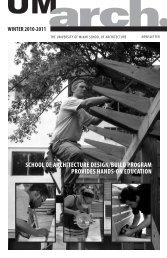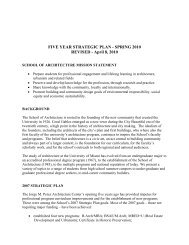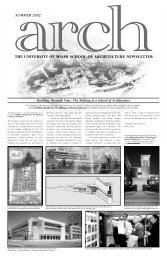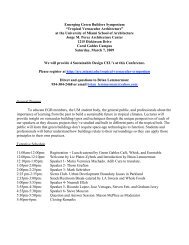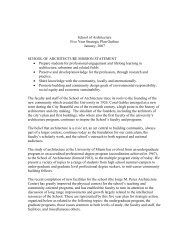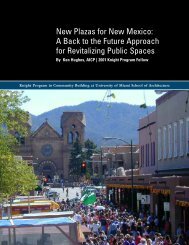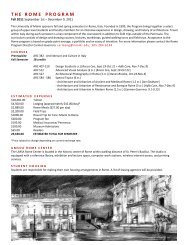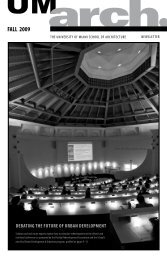Full Report - Knight Program in Community Building
Full Report - Knight Program in Community Building
Full Report - Knight Program in Community Building
Create successful ePaper yourself
Turn your PDF publications into a flip-book with our unique Google optimized e-Paper software.
HURLEY | THE PUBLIC PROCESS 10Step 2: Build<strong>in</strong>g the AgreementIn charrette terms, this step <strong>in</strong>volves develop<strong>in</strong>g the plan. Tasks that make upthis phase <strong>in</strong>clude:• Def<strong>in</strong>e the problem/task (<strong>in</strong>cludes discussion of positions/<strong>in</strong>terests)• Generate options/bra<strong>in</strong>storm<strong>in</strong>g• Analyze options• Po<strong>in</strong>t fact-f<strong>in</strong>d<strong>in</strong>g• Package the agreement• Test the agreement• Secure support from constituentsSome mediation models place heavy emphasis on the group def<strong>in</strong><strong>in</strong>g the problemor agree<strong>in</strong>g on the task. Gett<strong>in</strong>g to that agreement <strong>in</strong>volves discuss<strong>in</strong>g each party’spositions, and hopefully identify<strong>in</strong>g the <strong>in</strong>terests that underlie those positions. Ifeveryone can come to a common def<strong>in</strong>ition of what the problems are, and agreethat the underly<strong>in</strong>g <strong>in</strong>terests are legitimate, develop<strong>in</strong>g a solution that is mutuallysatisfy<strong>in</strong>g is much easier than if all of the parties are pull<strong>in</strong>g <strong>in</strong> different directions.In a consensus-build<strong>in</strong>g process, the stakeholders usually work together todevelop a jo<strong>in</strong>t def<strong>in</strong>ition of the problem. In a charrette, the clients and designersusually def<strong>in</strong>e the scope (problems to address, tasks to accomplish) dur<strong>in</strong>g the RFPand contract<strong>in</strong>g process. Although some adjustment to the scope is often madedur<strong>in</strong>g a charrette, there is rarely an explicit discussion with all of the stakeholdersabout what the scope should be. In many cases, leav<strong>in</strong>g out this task as an explicitstep is probably f<strong>in</strong>e. However, if stakeholders have very different ideas about whichissues should be addressed, they may be resistant to any proposals that are <strong>in</strong>troduced.If you experience seem<strong>in</strong>gly irrational resistance to proposals dur<strong>in</strong>g a charrette, itmay be because people are upset about a different problem.Lesson: Especially <strong>in</strong> situations with high levels of conflict, make sure the keystakeholders agree with the scope and focus of the charrette.Charrettes excel at three tasks <strong>in</strong> this stage: bra<strong>in</strong>storm<strong>in</strong>g, analyz<strong>in</strong>g theoptions, and jo<strong>in</strong>t fact-f<strong>in</strong>d<strong>in</strong>g. The synergy of hav<strong>in</strong>g a variety of specialists, theshort feed-back loops, and the public transparency of the analysis are some of thestrengths of the charrette process.Lesson: Facilitators and mediators would benefit from learn<strong>in</strong>g about charrettepractices for creat<strong>in</strong>g and filter<strong>in</strong>g physical design options.





